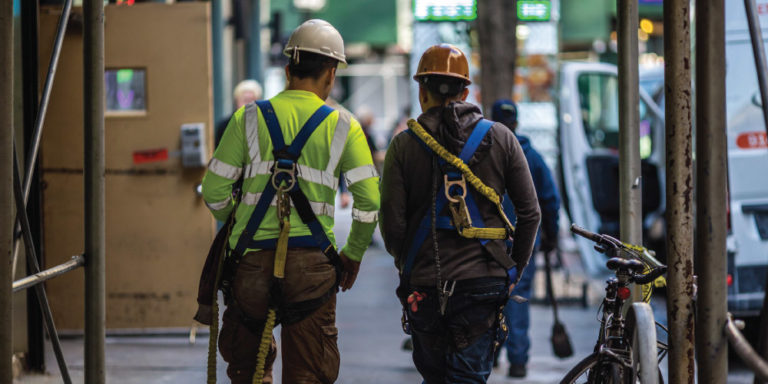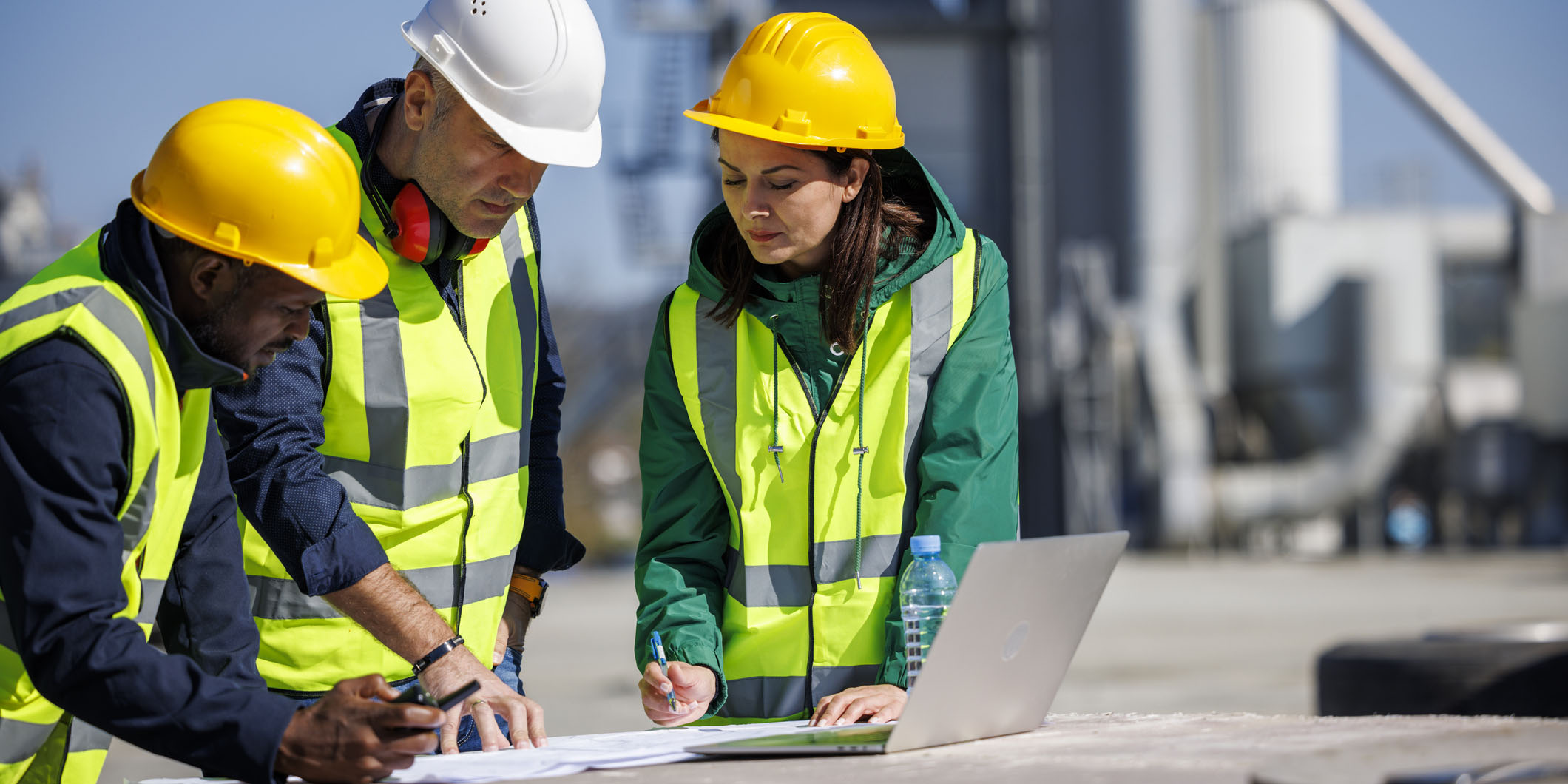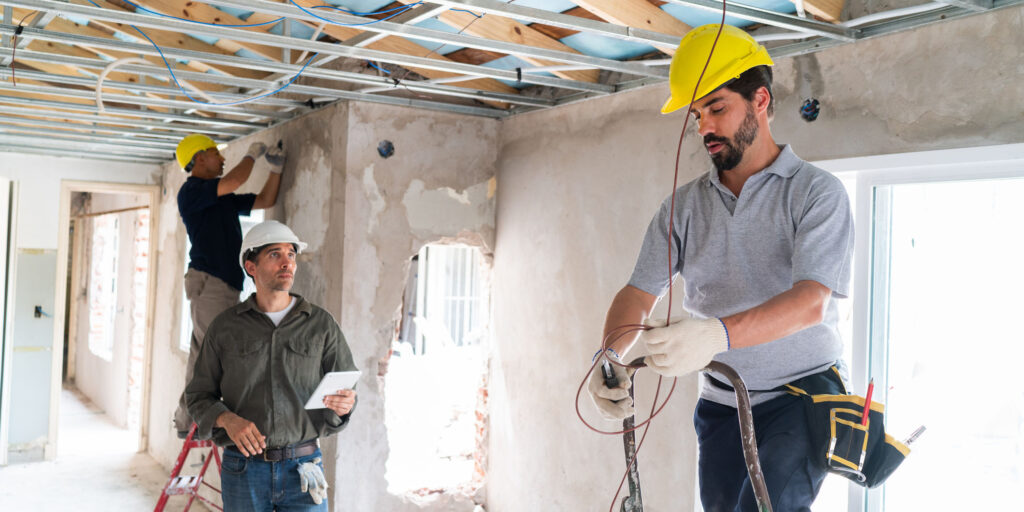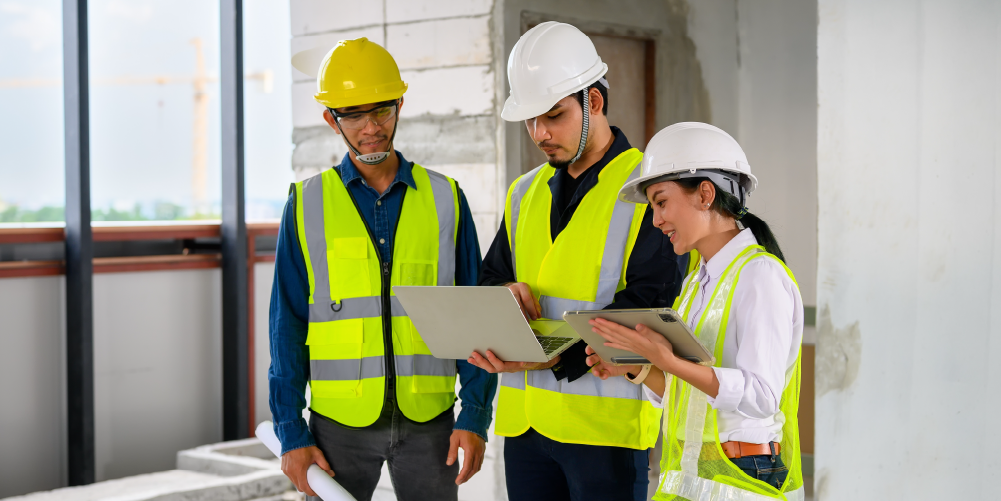— 7 min read
10 Common Construction Hazards and How to Mitigate Them
Last Updated Apr 8, 2025
Last Updated Apr 8, 2025

Construction sites present significant safety challenges that require proactive risk management. With proper hazard controls, teams can improve safety, reduce downtime, and increase project efficiency.
This guide examines the ten most common construction site hazards and provides practical strategies to mitigate them.
Table of contents
Construction Hazards & Prevention Strategies
Safe Work Australia ranks construction as one of the highest-risk sectors for workplace accidents. Managing these risks requires early identification, effective control measures, and a consistent commitment to safety across all project phases.
That commitment starts at the top. When leadership prioritises safety, it creates a culture where every team member—from project managers to subcontractors—understands that construction safety is not just a compliance task but a key driver of productivity and success.
Let’s explore the most common site hazards and how to prevent them.
1. Vehicle Accidents
Pro Tip
Construction quality and safety management software can help mitigate vehicle accidents by ensuring compliance with safety regulations, identifying potential hazards, tracking safety incidents, providing training and education to workers, and assessing risks. By implementing these features, you create a safer work environment and reduce the risk of vehicle accidents on the job site.
High-traffic construction environments combine heavy machinery, delivery vehicles, and mobile equipment operating in confined spaces. This creates significant vehicle-related collision risks, especially in areas with poor visibility or congested work zones.
To reduce the risk of vehicle-related incidents:
- Brief all workers on site traffic protocols.
- Designate and separate traffic zones using clear signage and physical barriers
- Use spotters or flaggers when operating large equipment in congested areas
- Install high-visibility signage and lighting, especially in low-light conditions
- Conduct daily checks on vehicles and equipment before use
- Implement and regularly update a traffic management plan
2. Working at Heights
Falls remain one of the leading causes of serious injury and death on construction sites. These incidents often occur when workers carry out tasks on scaffolds, roofs, ladders, or any elevated surface without adequate fall prevention systems in place.
To reduce the risk of falls from heights:
- Post signage and restrict access to incomplete or non-compliant elevated structures.
- Install physical fall prevention systems such as guardrails, edge protection, and safety nets
- Provide fall arrest equipment like harnesses, lanyards, and certified anchor points
- Conduct routine inspections of scaffolds, ladders, and safety gear
- Limit access to elevated work areas to authorised and trained personnel
- Deliver ongoing training on safe practices when working at heights.
3. Electrical Hazards
Construction sites are full of electrical risks, from temporary power setups and exposed wiring to contact with overhead lines. Electric shock, burns, and fires pose serious safety threats without proper controls.
To keep workers safe around electricity:
- Provide training on electrical hazard recognition and safe work practices.
- De-energise circuits using lockout/tagout procedures before starting electrical work
- Use properly rated, grounded, and well-maintained tools and cords
- Protect all electrical systems from water, mud, and physical damage
- Identify and mark overhead and underground services before digging or lifting
- Use ground fault circuit interrupters (GFCIs) and residual current devices (RCDs) on temporary power
4. Slips, Trips, and Falls
Uneven surfaces, wet conditions, poor housekeeping, and inadequate lighting contribute to slip and trip injuries, which account for a significant percentage of construction incidents.
To improve surface safety and prevent falls:
- Implement regular housekeeping routines to reduce clutter and surface hazards.
- Clean up spills and wet areas promptly and use slip-resistant mats where needed
- Tape down or route cords, hoses, and cables away from walkways
- Level uneven ground and mark elevation changes with high-visibility tape
- Maintain consistent lighting in all work and travel areas
- Enforce proper footwear standards with slip-resistant boots
5. Moving Objects
A busy construction site teems with constant activity and movement, such as heavy machinery, swinging loads, and—if not managed properly—falling materials. All of these moving objects create struck-by hazards—situations in which workers are hit by objects that can cause serious injuries and even fatalities.
To minimise and prevent struck-by incidents from moving objects, implement these key control measures that target the most common site hazards:
- Use spotters when operating heavy machinery in congested areas.
- Ensure all moving loads are properly secured
- Provide notice to site workers to steer clear of suspended loads and overhead work
- Strictly enforce the use of personal protective equipment (PPE) like hard helmets and safety glasses
6. Noise
Excessive noise on a construction site is more than just a nuisance. Prolonged exposure beyond safe limits can cause hearing damage and permanent hearing loss.
Safe Work Australia provides two noise limits to help construction site managers keep employees safe:
- Workers must not be exposed above 85 decibels (as an average) for over 8 hours at work.
- Workers must never be exposed to a noise level above 140 decibels.
The most important protection against noise is physical hearing protection like earplugs or earmuffs rated for the equipment’s noise level.
Other strategies include:
- Implement engineered controls like equipment enclosures and sound barriers
- Develop equipment-specific exposure limits based on decibel readings
- Rotate workers between high and low-noise tasks to limit exposure duration
- Conduct regular audiometric testing for workers in high-noise environments
- Create noise zone maps to identify and mark high-risk area.
How Buildcorp Streamlines Construction Projects
See how Buildcorp improves quality, reduces rework, and keeps every project on track from start to finish

7. Vibration
Certain hand-held power tools, like jackhammers and hammer drills, generate intense vibration. When these tools are used for extended periods, workers increase the risk of developing hand-arm vibration syndrome (HAVS). HAVS can lead to permanent nerve damage, reduced grip strength, and chronic pain. In extreme cases, it can be irreversible.
Practical strategies to reduce the risk of HAVS include:
- Selecting for low-vibration tools where possible
- Limiting exposure time by rotating tasks between workers
- Providing workers with anti-vibration gloves, and/or warm gloves in cold conditions to maintain blood flow and reduce HAVS risk
- Maintaining and servicing equipment to reduce vibration levels
- Training workers to hold tools with the lightest grip necessary to reduce the impact of vibration.
8. Exposure to Chemicals and Dust
Construction materials release dusts, fumes, vapors, and other airborne contaminants during processing and application. Crystalline silica from concrete cutting, asbestos from renovations, and chemical emissions from coatings, for example, all pose significant respiratory risks.
PPE is the best mitigation strategy for these hazards. Use masks and respirators whenever dealing with contaminants, have workers wear chemical-resistant gloves when dealing with epoxy resins, and provide eye protection at all times.
You should also:
- Ensure adequate ventilation in closed spaces
- Schedule dusty tasks during off-peak hours or when fewer workers are nearby
- Read and follow safety data sheets (SDS) for all materials
- Provide access to proper washing facilities
- Use wet-cutting methods or dust extraction systems when working with concrete, masonry, or other materials that generate dust.
9. Excavations and Trenching Hazards
The most dangerous excavation hazard is a ground collapse, where unstable soil gives way and buries workers underneath, though there are some other risks involved with excavations and trenching, including:
- Falls into open trenches
- Striking underground utilities
- Exposure to hazardous gases
- Oxygen-deficient atmospheres.
To prevent ground collapses, it is important to:
- Shore, bench, or shield all trenches deeper than 1.5 metres
- Inspect open excavations daily and after weather changes
- Maintain safe distances between heavy equipment and trench edges
- Install physical barriers and warning signs around open excavations
- Test atmospheres in deep excavations for oxygen levels and hazardous gases
- Locate and mark all underground services before breaking ground.
10. Fatigue
When physical work, long hours, and challenging environments are the norm, fatigue is always an important risk factor.
Fatigued workers are more likely to make mistakes, lose focus, and take shortcuts, increasing the risk of incidents involving falls, vehicles, tools, and machinery. Sleep is an important factor in reducing fatigue, but nutrition, heat, hydration, and mentally-intense work are also key factors affecting worker fatigue.
Safe Work Australia provides some helpful tips on how smarter work scheduling can help tackle fatigue, such as:
- Scheduling safety-critical work outside the low body clock periods (2am–6am and 2pm–4pm)
- Shifting work schedules to avoid working in high-heat conditions
- Structuring shifts so that high-demand tasks are in the middle of the shift and decrease toward the end of the day
- Provide appropriate rest areas and ensure access to hydration
- Train supervisors to recognize fatigue indicators and respond appropriately
- Consider task rotation for highly repetitive or physically demanding work
Prevent hazards with construction safety management software.
A comprehensive approach to site safety doesn’t just reduce injury risk—it improves productivity, protects your workforce, and boosts your reputation.
Implementing a reliable construction safety or quality management platform can help teams track hazards in real time, log inspections, and respond quickly to issues—transforming safety from a reactive task into a proactive advantage.
Remember:
- Unsafe conditions delay projects
- Workplace injuries increase costs and insurance premiums
- Skilled labour is harder to attract if your sites aren’t safe
While timely project delivery is always a goal, nothing is more important than sending your people home safe at the end of every shift.
Categories:
Tags:
Written by
Emma De Francesco
18 articles
Emma is currently Strategic Product Consultant at Procore where she loves partnering with clients to help them achieve the best possible results. She has worked as a Project Manager in previous roles, responsible for overseeing small to medium-sized projects across various sectors including commercial, health and lifestyle, retail, government and hotels. Throughout these projects, she managed everything from project costs, program and quality & safety, to design management, procurement, and authority approvals.
View profileExplore more helpful resources

Cash Flow Forecasting in Construction: How to Stay Ahead of Funding Gaps and Protect Project Performance
Cash shortfalls are a leading cause of stalled projects, unpaid contractors, and budget blowouts in construction. Without a clear forecast of how cash will flow in and out over time,...

Construction Handover: The Keys to a Smooth and Successful Transition
Project handover should be a seamless transition, but its success is determined long before the last walkthrough. When teams consistently align on design, timelines, and quality, and support that alignment...

Cutting Delays and Costs: Proven Ways to Boost Construction Site Efficiency
On-site efficiency separates profitable construction projects from those plagued by delays and budget overruns. In Australia’s construction landscape—where supply chain disruptions, skilled labour shortages, and increasingly strict regulations are the...

Why Communication is the Hidden Risk Factor in Construction
Construction is a high-risk industry—not just financially, but physically and reputationally. While significant effort goes into mitigating physical hazards, ensuring financial control, and protecting contractual interests, one of the biggest...